
Copy of What is Only Up? The game which is taking players hours or seconds to complete
The online gaming world has a new obsession, with a game called Only Up where you simply have to keep climbing up a series of random objects until you reach space. The game sounds relatively straightforward as anyone who has even the most basic concept of videogames knows how to climb up various structures. However, Only Up does not make the game easy for players as the seemingly infinite amount of objects range from pipes, bridges and trampolines but even the slightest of mistakes can end in disaster sending the players plummeting all the way back to the start of the game. Only Up was developed by SCKR Games and released in May 2023. It is available to play on Steam for the price of £8.50 ($10.80). Sign up to our free Indy100 weekly newsletter The game has gone viral thanks to high-profile streamers such as Adin Ross, Hasan Piker and iShowSpeed playing the game on their respective streams. iShowSpeed, who has 17 million followers on YouTube, attempts to play the game have proved to be particularly entertaining. At one point he lost 8 hours of progress. Thankfully, while playing the game on Tuesday the 18-year-old was able to complete the game in just under 5 hours. The most impressive run on the game so far has come from streamer Shade managed to find a glitch which allowed him to complete it in just 33 seconds. Whether you want to complete the game properly or use the glitch is your call but have fun regardless. Have your say in our news democracy. Click the upvote icon at the top of the page to help raise this article through the indy100 rankings.
2023-07-02 17:29

Scientists discover why a huge gravity hole has opened in the Indian ocean
Scientists have found an explanation for a 'gravity hole' in the Indian Ocean. A gravity hole is an area where gravitational pull is low, causing the seafloor to sink. Deep beneath the ocean, there is one that is three million square kilometers in size and previously it has confused scientists. Now two researchers from the Indian Institute of Science, Debanjan Pal and Attreyee Ghosh, think they have solved the mystery. More than 1,000 kilometers (621 miles) beneath Earth's crust, they found cold, dense remnants of an ancient ocean plunged into a 'slab graveyard' beneath Africa some 30 million years ago, stirring up hot molten rock. Sign up to our free Indy100 weekly newsletter Pal and Ghosh retraced the formation of the massive geoid by modeling how tectonic plates skimmed over Earth's mantle for the past 140 million years. They ran simulations and compared the shape of the oceanic low those models predicted with observations of the dent itself. The models that reproduced the Indian Ocean geoid low in its current form all had one thing in common: plumes of hot, low-density magma wafting up beneath the low. These plumes, as well as a distinctive mantle structure, are what created the geoid low; if they rise high enough, Pal and Ghosh reckon. "In short, our results suggest that to match the [shape and amplitude of the] observed geoid low, plumes need to be buoyant enough to come up to mid-mantle depths," the pair wrote. The first of these plumes appeared about 20 million years ago, to the south of the Indian Ocean geoid low, and around 10 million years after the old Tethys Sea sank into the lower mantle. As the plumes spread beneath the lithosphere and inched towards the Indian peninsula, the low intensified. But more research needs to be done to work out what is really going on as not all scientists are convinced. Science is crazy. Have your say in our news democracy. Click the upvote icon at the top of the page to help raise this article through the indy100 rankings.
2023-07-01 15:48

Every single person in Europe is a descendant of one man
Sister Sledge was right, we are family. It's well-known that all humans share a common ancestor but according to researchers almost all Europeans can trace that back to one guy. That guy is Charlemagne, the first Holy Roman Emperor. In 2013, scientists Peter Ralph and Graham Cooper published a study indicating that all Europeans are descendants from the same people, mainly from the ninth century. Sign up for our free Indy100 weekly newsletter Charlemagne, who lived during the 800s allegedly produced eighteen children with seven different women. By number standards, this means that people of European decent are most likely related to Charlemagne in some way. Celebrities like Bill Hader and Brooke Shields have revealed that they share the common ancestor. Even Sir Christopher Lee is a descendant of the Holy Roman Emperor. And if you're European, you probably are too. According to Scientific American, "because Charlemagne lived before the isopoint and has living descendants, everyone with European ancestry is directly descended from him." Some Europeans who take a DNA tests can see even their lineage directly traced back to the common ancestor. But before you jump at the chance to see for yourself, more than likely it won't pop up- even if you are a descendant of the Roman Emperor. This is because bloodlines have been diluted and not all genes are passed on from parent to child. So while you may be vaguely related to Charlemagne, you may not carry any of the same genes. Have your say in our news democracy. Click the upvote icon at the top of the page to help raise this article through the indy100 rankings.
2023-06-30 23:21
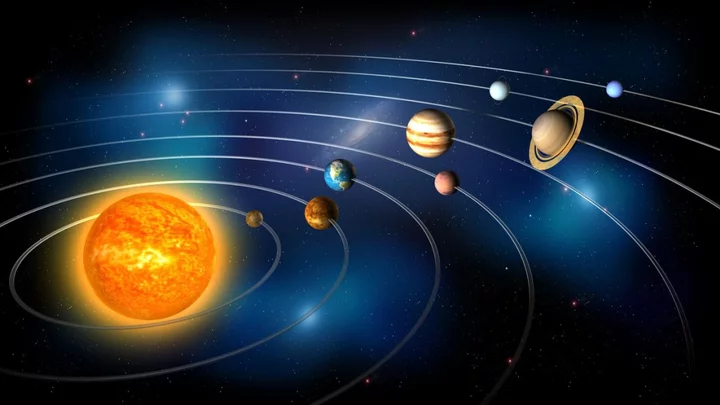
Scientists discover secret planet hidden in our solar system
There are eight planets in our solar system – plus poor old Pluto, which was demoted in 2006 – but what if there were more? Turns out that might be the case. Astronomers have calculated there is a 7 per cent chance that Earth has another neighbour hiding in the Oort cloud, a spherical region of ice chunks and rocks that is tens of thousands of times farther from the sun than we are. “It’s completely plausible for our solar system to have captured such an Oort cloud planet,” said Nathan Kaib, a co-author on the work and an astronomer at the Planetary Science Institute. Sign up to our free Indy100 weekly newsletter Hidden worlds like this are “a class of planets that should definitely exist but have received relatively little attention” until now, he said.. If a planet is hiding in the Oort cloud, it’s almost certainly an ice giant. Large planets like Jupiter and Saturn are generally born as twins. They have huge gravitational pulls of their own, however, and sometimes destabilise one another. That could have led to a planet to be nudged out of the solar system entirely – or exiled to its outer reaches, where the Oort cloud resides. “The survivor planets have eccentric orbits, which are like the scars from their violent pasts,” said lead author Sean Raymond, researcher at the University of Bordeaux’s Astrophysics Laboratory. That means that the Oort cloud planet could have a significantly elongated orbit, unlike the near-perfect circle Earth tracks around the sun. Trouble is, when things are that far away, they’re pretty difficult to spot. “It would be extremely hard to detect,” added Raymond. “If a Neptune-sized planet existed in our own Oort cloud, there’s a good chance that we wouldn’t have found it yet,” said Malena Rice, an astronomer at MIT not involved in this work. “Amazingly, it can sometimes be easier to spot planets hundreds of light-years away than those right in our own backyard.” Time to crack out the telescope. Have your say in our news democracy. Click the upvote icon at the top of the page to help raise this article through the indy100 rankings.
2023-06-30 15:16
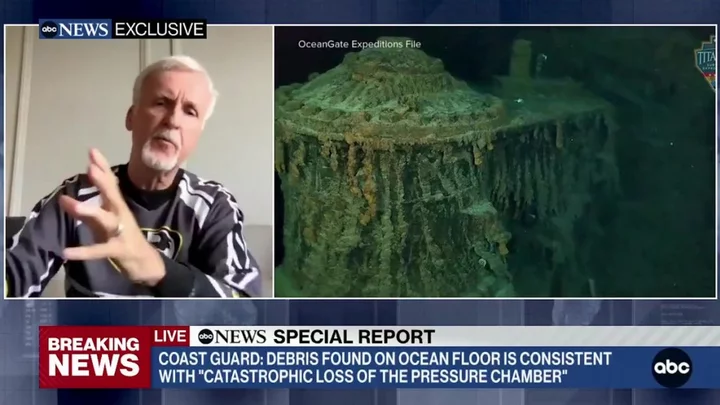
Why didn't the Titanic implode when it sank?
After it was discovered that the OceanGate submersible imploded during its expedition to the Titanic, some have wondered why the Titanic did not reach the same fate when it sank. Last Thursday (June 22), the U.S. Coast Guard had announced that the OceanGate submersible which contained five people, had suffered a "catastrophic implosion" that killed all onboard. Sign up to our free Indy100 weekly newsletter Since learning about the news, some have asked why the sub imploded but the Titanic didn't as it sank. One user took to Twitter to ask the question that was on many minds: Many quickly replied to help explain why the Titanic didn't implode, the answer being that because the Titanic wasn't pressurised, the lack of pressure differential means that the sinking would not result in an implosion. Writing for Northeastern Global News, Arun Bansil, professor of physics, explained that "when a submersible is deep in the ocean it experiences the force on its surface due to water pressure. When this force becomes large than the hull can withstand, the vessel implodes violently." Many also took the opportunity to inform that some parts of the Titanic actually did implode. The stern (the rear) of the ship imploded roughly 60 metres (200 feet) below the surface of the water. Lots of air was trapped in the back of the ship, so when the external pressure got high enough, it imploded. Whereas the air had been released from the front of the ship, which caused the pressure to be equal on the outside and inside, therefore no implosion occurred. As one user explained: Have your say in our news democracy. Click the upvote icon at the top of the page to help raise this article through the indy100 rankings.
2023-06-30 03:16
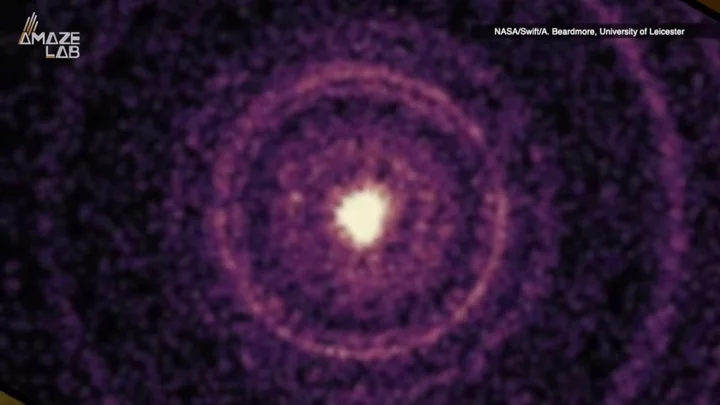
Scientists just detected a ‘cosmic bass note’ in the depths of space
A low intergalactic grumbling is emanating from deep space, according to scientists. And no, it’s not the start of the end times. Astronomers say they detected the first-of-their-kind low frequency ripples, described as a “cosmic bass note” of gravitational waves, which is thought to be caused by supermassive black holes merging across the universe. The discovery could unveil new secrets about how the monster black holes, which lie at the centre of galaxies, work. The objects are millions – possibly billions – the times the mass of the sun, but little is known about them because no light can escape. Sign up to our free Indy100 weekly newsletter “This is huge news,” said Dr Stephen Taylor, chair of the North American Nanohertz Observatory for Gravitational Waves (Nanograv) consortium, which led the team which made the discovery, and an astrophysicist at Nashville’s Vanderbilt University. Dr Michael Keith, of Jodrell Bank Centre for Astrophysics and a member of the team which helped find the signal, added: “The results presented today mark the beginning of a new journey into the universe to unveil some of its unsolved mysteries. “We are incredibly excited that after decades of work by hundreds of astronomers and physicists around the world, we are finally seeing the signature of gravitational waves from the distant universe.” Before the discovery, scientists have only captured short “chirps” of gravitational waves which are linked to the massive objects merging. But the “bass note” comes after they tuned into a deeper range of frequencies. It is thought to be caused by a single complete gravitational wave travelling at the speed of light. Astronomers think it is produced by the entire population of supermassive black hole binaries from over roughly the last 8bn years of the universe. “We think each pair contributes a little wave, which is added to a little wave of another, and all together that is what we may see right now – a sort of murmur of the entire population,” said Prof Alberto Vecchio of the University of Birmingham and a member of the European Pulsar Timing Array. Prof Andrew Pontzen, a cosmologist at University College London, added: “It’s not often that we get a glimpse of the universe through a totally new lens, but after 15 years of patient work, Nanograv seems to be providing just that. It’s tremendously exciting to see initial evidence for these waves, which will eventually teach us an enormous amount about supermassive black holes, hundreds of millions of times the mass of the sun.” The findings were published on 29 June by Astrophysical Journal Letters. Have your say in our news democracy. Click the upvote icon at the top of the page to help raise this article through the indy100 rankings.
2023-06-29 23:54

Top Republican says US officials are 'fearful' about UFO investigation
Fans of The X Files have got a new alien-related US government drama to get stuck into, it seems. Senior Republican Marco Rubio claims that those who have reported alien aircraft being retrieved by the US government “have held very high clearances and high positions within our government." The Florida senator and vice chair of the Select Committee on Intelligence did not reveal who had come forward with claims, but said: “Frankly, a lot of them are very fearful.” Sign up to our free Indy100 weekly newsletter “Fearful of their jobs, fearful of their clearances, fearful of their career.” At the start of June, James Comer, chair of the influential House Oversight Committee, said the group was looking into allegations that a top-secret military program already had a fully intact UFO. Republicans Anna Paulina Luna of Florida, a committee member, and Tim Burchett of Tennessee, who is not a committee member but has made claims about a government cover-up on the subject in the past, are to lead the probe. The investigation came after David Grusch, a 36-year-old airforce veteran, made public claims about UFOs. Grusch previously worked at the National Reconnaissance Office, on what is now referred to as Unidentified Aerial Phenomena (UAPs). Grusch told NewsNation that the government had retrieved a number of “non-human origin technical vehicles,” some of which contained “dead pilots”. “There are people who have come forward to share information with our committee over the last couple of years,” Rubio said on 26 June. Referring to Grusch, he added: “I would imagine some of them are potentially some of the same people perhaps he’s referring to.” Following the NewsNation interview, Department of Defense spokesperson Sue Gough said it had “not discovered any verifiable information to substantiate claims that any programs regarding the possession or reverse-engineering of any extraterrestrial materials have existed in the past or exist currently.” NASA also said that despite one of its priorities being the search for extraterrestrial life, it had not found credible evidence. Rachel Partlow, communications director for Burchett, told Newsweek on 27 June that the congressman was “aware” of Grusch's claims. She declined to comment on whether the veteran would be brought in to provide testimony, with hearing dates not yet set in stone. Have your say in our news democracy. Click the upvote icon at the top of the page to help raise this article through the indy100 rankings.
2023-06-29 23:23
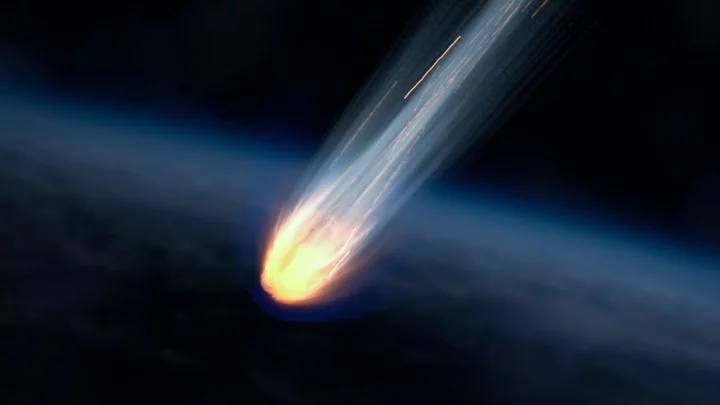
'Alien spacecraft' found at the bottom of Pacific Ocean
For years people have been looking to the skies for signs of alien life - but maybe, they should have been looking at the bottom of the ocean this whole time. A Harvard physicist has claimed that parts of an alien 'spacecraft' could have been uncovered under the sea. Professor Avi Loeb set off on a search along the bottom of the Pacific Ocean and found 50 iron pieces which originated from the IM1 meteor. IM1 crashed off the coast of Papua New Guinea and Leob believes it could contain key information in the search for life out there in the universe, saying he hasn’t discounted the idea of the pieces being evidence of a “spacecraft” from an “extraterrestrial technological civilization” which crashlanded on Earth. Sign up to our free Indy100 weekly newsletter Loeb is currently the head of Harvard’s Galileo Project, focusing on the search for aliens, and he said the fragments they found must have come from “a natural environment different from the solar system, or an extraterrestrial technological civilization.” Speaking to Fox News Digital, Loeb detailed his thoughts on the origins of the meteor fragments by saying: “Given IM1's high speed and anomalous material strength, its source must have been a natural environment different from the solar system, or an extraterrestrial technological civilization.” He added that IM1 “is actually tougher and has material strength that is higher than all the space rocks that were catalogued by NASA. That makes it quite unusual.” Have your say in our news democracy. Click the upvote icon at the top of the page to help raise this article through the indy100 rankings.
2023-06-29 21:25
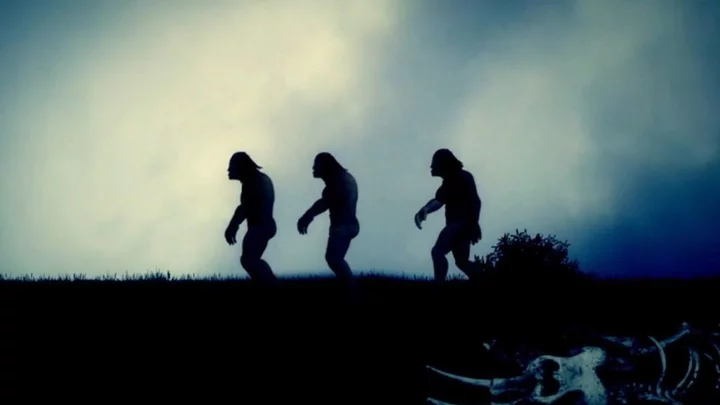
Everybody alive today came from one African country, according to study
It’s well known that all humans alive today can be traced back to a common ancestor but a study may have found where that ancestor originates. Researchers at the University of Oxford’s Big Data Institute mapped the entirety of genetic relationships among humans to create the largest human family tree ever. By combining modern and ancient human genomes data from eight different databases, the researchers were able to create a massive family tree. This allowed them to see how a person’s genetic sequence relates to another using the points of the genome. Sign up for our free Indy100 weekly newsletter “Essentially, we are reconstructing the genomes of our ancestors and using them to form a vast network of relationships,” Lead author Dr Anthony Wilder Wohns said. “We can then estimate when and where these ancestors lived.” Where they lived? Sudan, Africa. Dr Wohns told Reuters, "The very earliest ancestors we identify trace back in time to a geographic location that is in modern Sudan. “These ancestors lived up to and over 1 million years ago—which is much older than current estimates for the age of Homo sapiens—250,000 to 300,000 years ago. So bits of our genome have been inherited from individuals who we wouldn’t recognize as modern humans," Dr Wohns said. Researchers used 3,609 individual genome sequences from 215 populations and samples that ranged from 1,000s to over 100,000 years. By using a new method to compile the data, algorithms were able to predict where common ancestors were in evolutionary trees to explain some patterns of genetic variation. The results were a network of almost 27 million ancestors. “The power of our approach is that it makes very few assumptions about the underlying data and can also include both modern and ancient DNA samples,” Dr Wohns says. Not only does the data help us understand human geology better but the new method could help in other research, like medicine. “The underlying method could have widespread applications in medical research, for instance identifying genetic predictors of disease risk," Dr Wohns added. Have your say in our news democracy. Click the upvote icon at the top of the page to help raise this article through the indy100 rankings.
2023-06-29 18:27
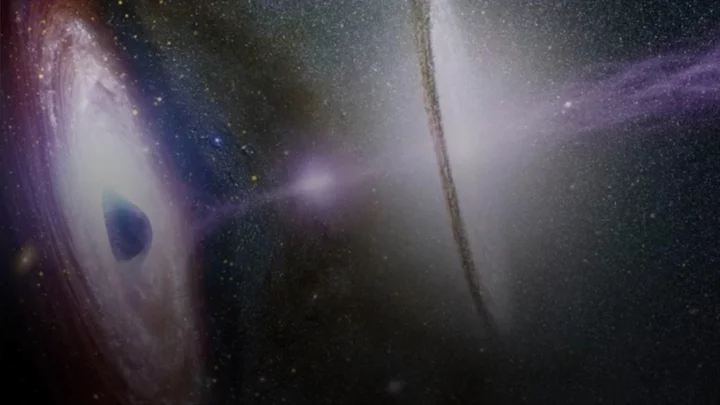
Stephen Hawking theory proved right by man-made black hole
Scientists have managed to simulate their very own black hole in their lab and witnessed how it began to glow. The black hole event horizon was created by a team of physicists from the University of Amsterdam, who used a chain of atoms in a single file to gain further understanding about the behaviour of a black hole. Its creation managed to prove Stephen Hawking's theory from 1974 where the black hole emitted a rare form of radiation. Sign up to our free Indy100 weekly newsletter They studied the properties of Hawking radiation through the creation of a black hole analog in the lab. According to Science Alert, Hawking radiation happens when "particles born from disturbances in the quantum fluctuations caused by the black hole's break in spacetime." The fact that the radiation exhibits a glow itself is in a strange space anomaly, as the event horizon of a black hole is supposed to be where neither light nor matter is able to get out. We all learn about the strength of a black hole in science class – and how we would all be inevitably sucked in as a result. This is possible due to its density within a certain range of the centre, so even an attempt at travelling beyond light speed (or any velocity in the universe for the matter) would not make this unavoidable. The fake black hole event also caused a rise in temperature that matched theoretical expectations of an equivalent black hole system, - but only when part of the chain extended beyond the event horizon, Science Alert reported. As a result, it is believed perhaps this entanglement of particles that straddle the event horizon plays a big role in generating Hawking radiation. Under simulations that began by mimicking spacetime thought of as "flat," scientists say the radiation was only thermal for a certain range of 'hop amplitudes'. So there may be certain situations where Hawking radiation can emit thermally - and could only be the case where gravity causes a change in the warp of space-time. "This can open a venue for exploring fundamental quantum-mechanical aspects alongside gravity and curved spacetimes in various condensed matter settings," the scientists wrote in their paper published by Physical Review Research. Have your say in our news democracy. Click the upvote icon at the top of the page to help raise this article through the indy100 rankings
2023-06-29 18:19

AI has revealed what infamous 'Bigfoot' footage truly is
It’s footage that’s fascinated conspiracy theorists for decades, but artificial intelligence is making people look at the most famous alleged sighting of ‘Bigfoot’ in a new light. Back in 1967, a clip known as the Patterson–Gimlin film claimed to show the mysterious creature, also known as ‘sasquatch’, walking through the Six Rivers National Forest in California. Roger Patterson and Robert Gimlin shot a figure moving in the woods in low resolution footage and claimed that they had discovered proof of the urban legend known as Bigfoot. The pair claimed at the time they tracked the figure before setting up filming equipment and capturing grainy video which looks briefly at the camera. Sign up to our new free Indy100 weekly newsletter While it was dismissed by the scientific community at the time and seen as a hoax by most people, it’s been poured over by conspiracy theorists ever since. It’s been analysed many times since, but new artificial intelligence has been used to present a clearer image than ever before. The clip has been stabilised and de-grained, and the results are clearer than ever. Social media user Rowan Cheung often shares the “latest developments in the world of artificial intelligence” and he posted the footage. Just as many conspiracists will have feared, the newly treated footage proves that it was clearly just a guy in a gorilla costume all along. Yes, we all knew that already, but this newly developed footage offers the clearest look at an infamous piece of footage yet – and people were quick to react on social media. “Nooppe! thats just a dude on his way to a costume party!” one wrote. Another said: “This is the ai work we needed.” One more said: “Just some bro out for a stroll.” “So it’s a dude in a gorilla suit?” a comment read. Artificial intelligence, it seems, has the power to surprise us when we least expect it. It’s not the first time ‘Bigfoot’ has made headlines this year, after people claimed to have discovered a sighting via Google Maps. Have your say in our news democracy. Click the upvote icon at the top of the page to help raise this article through the indy100 rankings.
2023-06-29 18:15
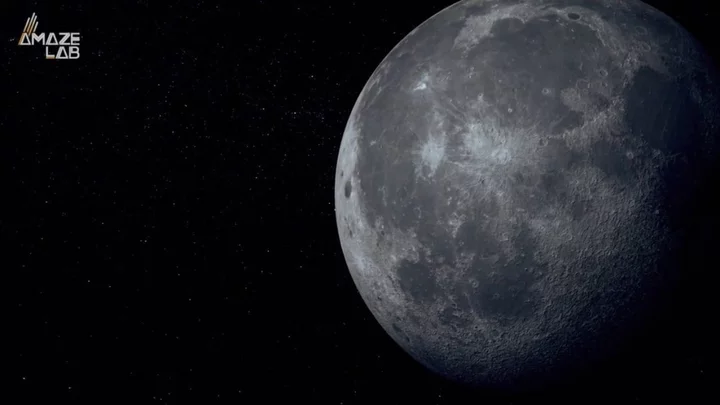
Scientists discover gigantic 'structure' under the surface of the Moon
The Moon has been a subject of awe and fascination for millennia, with its shape-shifting powers and enigmatic dark side. And though it’s the one celestial body on which man has taken (small) steps, we still have big leaps to go in understanding its potential and uncovering its secrets. However, one hidden feature of the Moon has been unearthed by scientists and it’s very, very big, and very, very heavy. Buried beneath its South Pole-Aitken basin – one of the largest preserved craters in the Solar System – is a structure which weighs at least 2.18 billion kilogrammes and measures more than 300km (186 miles) in depth and 2,000km (1,243 miles) in length. Sign up for our free Indy100 weekly newsletter The researchers who made the discovery, all based in the US, posited that the “anomaly” could be made out of metal from the core of an asteroid or oxides from the crystallisation of a magma ocean. "One of the explanations of this extra mass is that the metal from the asteroid that formed this crater is still embedded in the Moon's mantle,” lead author Peter B. James, from Houston’s Baylor University, said in a statement shared with IFLScience. Illustrating just how gigantic this thing is, he went on: "Imagine taking a pile of metal five times larger than the Big Island of Hawaii and burying it underground. That's roughly how much unexpected mass we detected.” The groundbreaking finding was made thanks to NASA’s Gravity Recovery and Interior Laboratory (GRAIL) mission, which measures changes in the Moon’s gravitational field. Data collected by GRAIL can then be used to study the internal composition of our cratered companion. The South Pole-Aitken Basin has been at the centre of numerous investigations because of just how unique it is. The region offers clues both on the interior composition of our closest satellite and its history, and who knows what other mysteries it holds... Have your say in our news democracy. Click the upvote icon at the top of the page to help raise this article through the indy100 rankings.
2023-06-29 17:52
